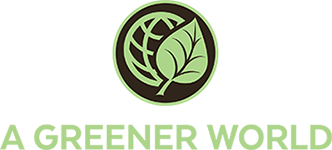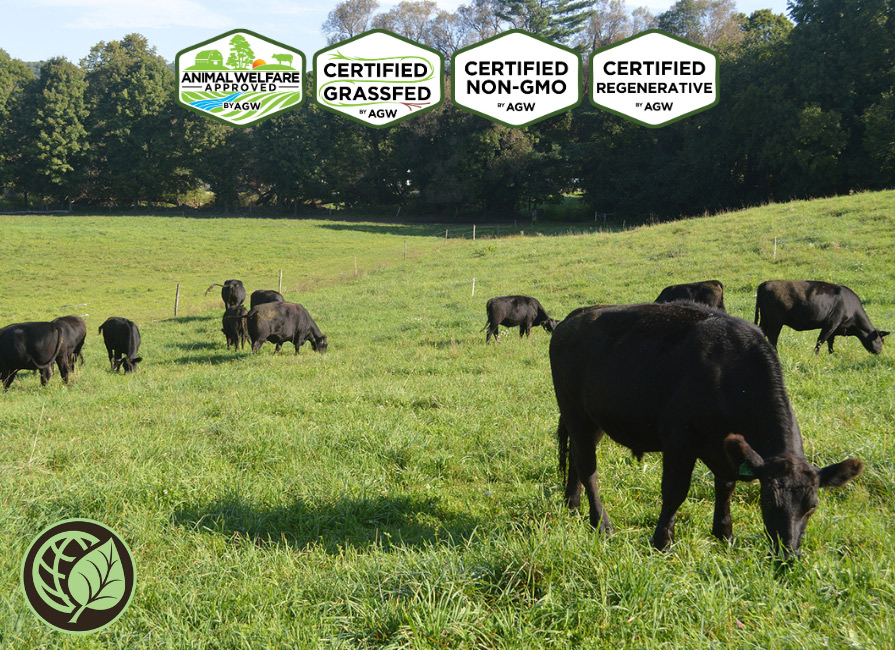One of the key attractions of our Certified Regenerative by AGW program is its practical…
Is The Antibiotic Free Campaign Really “Antibiotic Free” Or Will It Just Create A Two Tier Food System?
The use and misuse of antibiotics in animal agriculture is a hot topic. Only earlier this month, the UK Government’s Chief Medical Officer weighed into the debate and said that the rise of antibiotic resistant bacteria risks a global health catastrophe that ranks alongside the threat of climate change or terrorism. It’s serious stuff.
For some time now some groups have been campaigning for retailers to only sell “antibiotic-free” meat and poultry. But while I wholeheartedly support current efforts to regulate the use of antibiotics in farming to ensure that these most vital medicines remain as effective as possible for treating human illness, I’m afraid that I cannot support their calls. Although the simple “antibiotic free” message may resonate with the public at large, the truth is that an all or nothing approach to antibiotic use in farming won’t actually fix anything. In fact, it’s more likely to make things a whole lot worse.
Those of you who follow my blog will know that exposing the ongoing abuse of antibiotics in intensive livestock farming is a passion of mine. Virtually all intensively farmed animals in the U.S. now routinely receive regular low levels of antibiotics in their feed and water. These low levels of antibiotics are commonly known as “sub-therapeutic” treatments: in other words, the amount given is less than would be fed or injected if the animal was actually sick. That’s because this sub-therapeutic use of antibiotics isn’t designed to treat actual sickness: It’s designed to maximize production of meat, milk or eggs by improving the feed efficiency of the animals or by suppressing diseases that would otherwise spread like wildfire in the confined, dirty, and stressful conditions so typical of intensive livestock operations.
The problem for humans is that by allowing intensive livestock farms to routinely expose bacteria to regular sub-therapeutic levels of antibiotics in this way we are actually providing the ideal conditions for bacteria to mutate and become resistant to their effects. These antibiotic-resistant bacteria can then spread from animal to animal, and then farm to farm, and eventually infect human hosts. Indeed, scientists from around the world now emphatically link the sub-therapeutic use of antibiotics in intensive livestock farming to the dramatic rise in life-threatening antibiotic-resistant bacteria, some of which are now resistant to several types of antibiotics. According to Dr. Margaret Chan, Director-General of the World Health Organization, “In the absence of urgent corrective and protective actions, the world is heading towards a post-antibiotic era in which many common infections will no longer have a cure and, once again, kill unabated.”
The squandering of these precious medicines for the production of cheap animal protein (and profit) is even more galling when you consider that Alexander Fleming, the man credited with discovering penicillin back in the 1920s, used his Nobel Prize acceptance speech in 1945 to caution that the misuse of penicillin in this way would inevitably lead to resistance:
But I would like to sound one note of warning… There may be a danger, though, in under dosage. It is not difficult to make microbes resistant to penicillin in the laboratory by exposing them to concentrations not sufficient to kill them, and the same thing has occasionally happened in the body. The time may come when penicillin can be bought by anyone in the shops. Then there is the danger that the ignorant man may easily underdose himself and by exposing his microbes to non-lethal quantities of the drug make them resistant.
Well, the dramatic expansion of sub-therapeutic antibiotic use in industrial farming since the 1950s would no doubt have Fleming spinning in his grave. In the U.S., we now use more antibiotics per pound of meat produced than any other nation in the world. But if antibiotic resistance represents such a serious threat to human health in the U.S., why don’t I support the emerging calls for an outright ban on antibiotics in farming and the marketing of antibiotic-free products?
First, let’s make it clear that this whole debate has nothing to do with antibiotic residues in our food. When antibiotics are used appropriately, the risk of antibiotic residues remaining in our meat, milk, or eggs is absolutely negligible. No, the threat we are facing is the rise of bacteria that are resistant to antibiotics, leading to a situation where we can no longer treat many common diseases. We know that one of the ways that antibiotic resistance develops is when low or sub-therapeutic doses of antibiotics are routinely given to farmed livestock. Antibiotic resistance does NOT occur when antibiotics are used appropriately and judiciously to treat individual sick animals. But when you have a system that by default keeps an environment where infection is almost inevitable and profit the only driver then you must have a chemical crutch. The point I am trying to make is that the antibiotics themselves are not the problem: It is the ongoing misuse and abuse of antibiotics in industrial livestock farming systems which is directly resulting in the emergence of antibiotic-resistant bacteria. This is a very important distinction.
At best, the antibiotic free campaign is a naïve, ill-conceived, knee-jerk reaction to the problems we’re now facing from the appalling misuse of antibiotics in intensive livestock farming. At worst, it’s nothing more than an elitist marketing ploy. If you take the antibiotic free campaign position at face value then sick animals must never be treated with antibiotics. You’d be forgiven for assuming that any animal that does get sick must either be left to (hopefully) recover naturally, with the inherent risk of spreading disease among their companions and other welfare issues this may entail, or be euthanized once they become too ill to recover. Clearly, such a position would be neither ethically acceptable nor sustainable.
But challenge the antibiotic free campaigners on the potential welfare issues that may arise from an outright ban on antibiotics in farming and you soon find that this isn’t actually the position they hold. “Of course we would allow farmers to treat individual sick animals with antibiotics,” they proclaim. Indeed, once you look behind the “antibiotic free” rhetoric you find that most of the so-called antibiotic free programs actually dictate that their farmers must treat sick animals with antibiotics if it’s the only way to avoid pain and suffering. The problem is that they also dictate that if antibiotics are used the farmer can no longer sell the meat, milk or eggs from the treated animal(s) into the antibiotic-free supply chain.
Let’s get this straight: On the one hand the antibiotic free campaigners are publicly demanding that retailers must only source meat, milk and eggs from animals certified by an antibiotic free program. Yet on the other they’re saying that it’s acceptable for farmers in these programs to treat their animals with antibiotics on welfare grounds, just as long as they “dispose” of this second class meat, milk or eggs elsewhere. So exactly where do they think this (perfectly acceptable) food should go?
What we’re actually talking about here is establishing a two-tiered livestock system: One where those who can afford to can buy antibiotic-free meat, milk and eggs from animals that have never been treated with antibiotics, and where those who can’t must make do with the “second class” products from animals that were treated with antibiotics—and thus can no longer enter the upper-tier antibiotic-free supply chain. It’s outrageous, particularly when the issue isn’t the threat of antibiotic residues in food or the use of antibiotics per se, but specifically the continuing misuse and abuse of antibiotics by industrial farming systems which is encouraging the development of antibiotic-resistant bacteria.
The real irony, however, is that by agreeing that it may occasionally be necessary to treat individual sick animals or whole industrial flocks of poultry with antibiotics for welfare reasons, these so-called antibiotic free programs have implicitly accepted that antibiotics can be used in a safe and responsible manner to treat individual sick animals. By allowing antibiotics in this way—and yet deeming any resulting meat, milk and eggs as only fit for consumption by others—the position of the antibiotic free campaigners actually becomes completely untenable.
At Animal Welfare Approved, we believe that a sick animal must always be treated based on its individual needs, and that sometimes antibiotics may be required to alleviate pain or suffering. We also know that if antibiotics are used appropriately and judiciously to treat individual sick animals then the risk of the development of antibiotic-resistant bacteria is absolutely minimal. There must never be any financial or other imperative for a farmer to withhold any specific medication when considering the most appropriate treatment of a sick or injured animal, which is precisely why the AWA standards permit the targeted therapeutic use of antibiotics on individual animals when alternative treatments are not suitable or not effective, or if a veterinarian has specifically recommended antibiotic treatment.
But we also know that if the farmer observes an appropriate withdrawal period (the legal minimum between antibiotic use and the consumption of meat, milk or eggs from the treated animal to avoid antibiotic residues) then the risk of there being any antibiotic residues (Not actually the issue) in the meat, milk and eggs is almost non-existent. Rest assured that farmers in the AWA program must observe a period that is twice the legal minimum withdrawal period stated for the antibiotic used before they can market its meat, milk or eggs. The result? Pain and suffering in farm animals is minimized, the risk of disease is minimized, and the efficacy of antibiotics—for both humans and livestock—is protected. My point is that when antibiotics are used appropriately to treat individual sickness, and where the correct withdrawal period is fully observed, there is no justification whatsoever to reject the meat, milk or eggs as second class.
So what exactly are the antibiotic free campaigners hoping to achieve? Because the fundamental failings of intensive livestock farming will never be resolved by simply banning antibiotics—particularly if those antibiotics are then replaced by ionophores, sodium chlorate, citric acid or other antimicrobial drugs, which not only benefit the marketers who profit from the hype, but introduce new problems. No, we believe that reliance on routine antibiotics and in these new systems other antimicrobials, is a symptom of the fundamental problems of intensive livestock farming systems – and NOT the problem itself.
To make this point more clearly, think carefully about the following scenarios: Would you drop your opposition to the confinement of animals by the thousand on Concentrated Animal Feeding Operations (CAFOs) if the intensive farming industry simply promised to replace routine sub-therapeutic antibiotics with so-called “safer” non-antibiotic alternatives? Would you be happy for farmers to continue using cages, gestation and farrowing crates, or to beak trim their caged chickens if antibiotics were banned? Would you permit intensive farming to continue with its appalling record on greenhouse gas emissions and its toxic, polluting lakes of liquid waste just so long as antibiotics are prohibited? Neither would we.
At AWA, we have long argued that high welfare, sustainable farming is so much more than the presence or absence of antibiotics. At the risk of stating the obvious, if you buy meat or dairy products labeled simply as “antibiotic free” you will have ABSOLUTELY NO ASSURANCE WHATSOEVER that:
- Other forms of superbug-spawning antimicrobials weren’t used
- The animals were raised according to ANY specific welfare standards
- The animals were raised out on pasture—or even if they had ANY outdoor access at all
- The animals weren’t confined to slatted floors, crates, cages, or dirt feedlots
- The animals were not fed soy from clear-cut rainforests
- The farm didn’t store manure in vast open-air toxic lagoons
- The farmer was not simply an indentured servant to a multinational corporation, such as Perdue, Cargill or JBS
- The food came from an independent family farm
- The animals weren’t fed a diet unsuitable for their digestive systems
- The food wasn’t produced using other routine drugs or hormones
- The farmer undertook any steps to protect or enhance the local environment or to minimize their farm’s carbon footprint.
What’s more, the unrealistic and impractical calls from the antibiotic free campaigners could actually undermine the credibility (certainly in the eyes of the farming community) of those who are working diligently to introduce regulations and practices that really would ensure the judicious and responsible use of antibiotics in farming into the future. By polarizing the debate, and arguably fueling speculation among the farming community that they are somehow under attack from people who have little or no understanding of real farming issues, the antibiotic free campaign could drive more moderate farmers and ranchers away from their current position of supporting the responsible use of antibiotics in farming. And we need their help and support more than ever to show that judicious and appropriate antibiotic use really does work in practice.
This is why AWA has welcomed Congresswoman Louise Slaughter’s recent introduction of The Preservation of Antibiotics for Medical Treatment Act (PAMTA), which seeks to limit the overuse of antibiotics in livestock farming so these lifesaving drugs will remain effective in the treatment of human illnesses. Congresswoman Slaughter has introduced this important bill four times since 2009, but the issues have been routinely dismissed by the intensive farming lobby and its paid-off politicians. Slaughter’s announcement comes just two weeks after Dr. Tom Frieden, director of the U.S. Centers for Disease Control and Prevention, declared—in reference to carbapenem-resistant Enterobacteriaceae, a lethal bacteria that is spreading in U.S. hospitals—that on such bacteria “our strongest antibiotics don’t work and patients are left with potentially untreatable infections.” In light of the mounting scientific evidence of the link between intensive farming systems and the emergence of antibiotic bacteria, the importance of PAMTA cannot be overstated.
While I understand the concerns that people have about the misuse of antibiotics in industrial farming systems, the truth is that a single issue campaign for antibiotic-free meat, milk or eggs will fail to bring about the far-reaching changes to our food and livestock industry we so desperately need. But please don’t think for one second that I wish to maintain the status quo, or that I will accept the continuing indiscriminant waste of these vital medicines for the sake of the over-production of cheap animal protein. We got into this mess by treating farm animal as “widgets” and by arrogantly assuming we could get away with a quick fix whenever things went wrong, so we’re not going to solve the problems we now face by using the same reductionist “band aid” mentality that got us here in the first place. The stakes are now way too high. The solution isn’t to simply erase antibiotics from the picture: When it comes to our broken food and farming system, we need to go back to the start and repaint the entire canvas.


